Trichoglossus
The Trichoglossus genus includes several lorikeet species and subspecies, that are distributed widely through several islands including Australia, New Guinea, Phillipines, Lesser Sundas, Sulu Islands, Sulawesi, Moluccas and Papuan Islands.
There have been some confusion about the classification; this is especially true for the species Trichoglossus haematodus, which was previously believed and generally accepted to contain several subspecies, but recent studies have promoted many of these to separate species. Also some sources categorize the related species in the Psitteuteles genus as included in Trichoglossus.
These lorikeets have a very special tongue with several small hairs at the tip of the tongue, that are used for gathering pollen and nectar from flowers. The scientific name Trichoglossus is inspired by the ancient greek “tricho” and “glõssa” meaning “hair-tongue”. Due to their special diet needs these lorikeets can be a little messy which should be considered especially if planning on keeping them indoor in a cage.
They are very beautiful with bright colours, and are also very playful, which make them very popular as pets or in aviculture.
All Trichoglossus species has an orange/red beak. Some species (e.g. Scaly-breasted Lorikeet) are mostly green while other are way more colourful (e.g. Rainbow Lorikeet and Coconut Lorikeet).
The following species were previous included in the Trichoglossus genus but was moved to Saudareos with the IOC 11.2 update in 2021:
- Citrine Lorikeet (Trichoglossus flavoviridis)
- Mindanao Lorikeet (Trichoglossus johnstoniae)
- Ornate Lorikeet (Trichoglossus ornatus)
Species
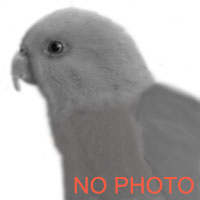 Trichoglossus capistratus
Trichoglossus capistratus
Marigold Lorikeet
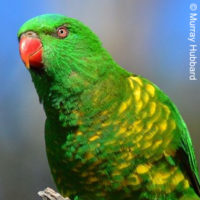 Trichoglossus chlorolepidotus
Trichoglossus chlorolepidotus
Scaly-breasted Lorikeet
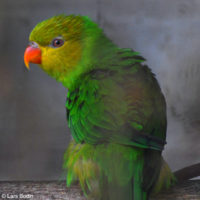 Trichoglossus euteles
Trichoglossus euteles
Olive-headed Lorikeet
 Trichoglossus forsteni
Trichoglossus forsteni
Sunset Lorikeet
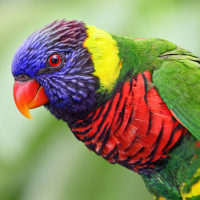 Trichoglossus haematodus
Trichoglossus haematodus
Coconut Lorikeet
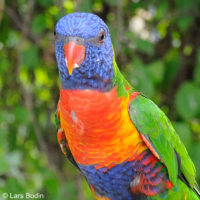 Trichoglossus moluccanus
Trichoglossus moluccanus
Rainbow Lorikeet
 Trichoglossus rosenbergii
Trichoglossus rosenbergii
Biak Lorikeet
 Trichoglossus rubiginosus
Trichoglossus rubiginosus
Pohnpei Lorikeet
 Trichoglossus rubritorquis
Trichoglossus rubritorquis
Red-collared Lorikeet
 Trichoglossus weberi
Trichoglossus weberi
Leaf Lorikeet
Photo Credits
- Scaly-breasted Lorikeet : Copyright © by Murray Hubbard
- Coconut Lorikeet : Benjamin – License: GNU Free Documentation License, version 1.2